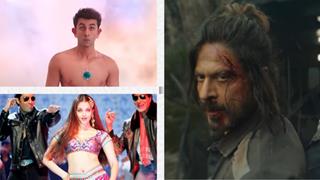Anurag Kashyap may have put his hand in the Big B's nest, tacitly accusing the megastar of stalling his production "Chittagong" to create space for son Abhishek's film. But director Bedabrato Pain is unperturbed and says there is enough space for both the cinematic adaptations of the uprising.
While Abhishek starrer "Khelein Hum Jee Jaan Sey", which hit the theatres Dec 3, is a linear, historical account of the uprising, yet-to-be released "Chittagong" shows how the freedom struggle started by Surjya Sen reached other parts of the country during the same time, says Bedabrato.
"Everyone inside Bengal knows the story of Masterda Surjya Sen and the Chittagong uprising but no one outside," says Bedabrato, an ex-NASA scientist and debutant director of "Chittagong", trying to explain the mystery.
"However, Manini Chatterjee's book 'Do and Die', one of the few in English, changed that. Around 2007, two years into my research, I came to know of her book and my wife and co-writer Shonali Bose met with and showed her the script. She wanted us to say that my film is based on her book, which we couldn't agree to, since it is based on real events and characters.
"Besides, hers was only one of the many books and documents referred to - many of which are in Bengali and written by actual participants in the uprising. I guess after this she tied up with Ashutosh Gowariker. The script of my film was ready even before Ashutosh decided to make it."
Surjya Sen led the Chittagong movement by armed revolutionaries, including teenage boys, April 18, 1930 to raid the armoury of police and auxiliary forces in what is present day Bangladesh.
Talking about the differences between the two films, he says, "Ashutosh's film is a linear, historic account of the Chittagong uprising.
"Whereas the main protagonist in my film isn't even Masterda, but a 16-year-old-boy named Jhunku and how he struggles with his self-doubts to win an impossible victory, torn as he is between Masterda's ideals and British district magistrate Wilkinson who loves him like a father."
Believing that there is space for both the films, he says, "Ashutosh's film was more external, mine is internal. Both can co-exist."
"KHJJS ends on a sad note with the defeat of the revolutionaries. The truth is different. Masterda, a few colleagues and some boys may have been killed, but the other revolutionaries and kids continued the rebellion, led huge popular movements and had tremendous influence on the Indian freedom struggle."
To illustrate his point, he narrates his meeting with the last surviving participant in the uprising - Benode Behari Chowdhury.
"In 2009, when I went to Chittagong, the nonagenarian was on a hunger strike."
Speaking about Jhunku, or Subodh Roy, who's the main protagonist of the film, Bedabrato says, "My wife Shonali met him in Calcutta in what turned out to be his deathbed. We have the last footage of him, which finds a place in the film."
Another little known aspect is Masterda's influence on revolutionaries in Maharashtra.
After Masterda's arrest, he was first imprisoned in Bombay jail and later shifted to Kolhapur jail. "While they were transporting him, the villagers in places where the convoy would halt at night would gather around and listen to Masterda," says Bedabrato. The result was a Chittagong style uprising in Sholapur in the mid 1930s.
Bedabrato, who shot the film with the same digital imaging technology that he with other NASA scientists had invented, is deeply grateful to those in the industry like Anurag Kashyap, Vishal Bharadwaj, Prasoon Joshi, Shankar-Eshaan-Loy, among others who have believed in his film.
The debutante does not know whether the controversy stirred up will help his film, but he is looking forward to the films release, now shifted to April 2011.
My film offers different take on Chittagong uprising
Friday, December 17, 2010 13:36 IST

















